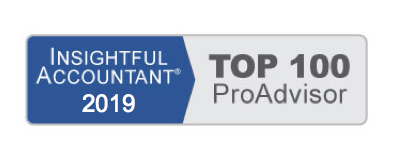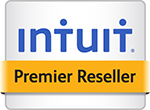Choosing a Reporting Basis
Are you a business owner unsure of what critical information you should be reviewing in your data file and how often you should perform the review, or are you an accounting professional new to the QuickBooks software? This QuickBooks Solutions Guide provides you with practical steps to review your data and reports that will provide meaningful information.
If you are a business owner, you can use the methods outlined in the QuickBooks Solutions Guide to review the results of your day-to-day transaction accuracy so that when you prepare financial reports, such as the Balance Sheet or Profit & Loss for your business, you can be confident the information is correct.
The frequency with which a business owner chooses to review his data often differs from the frequency with which an accountant reviews the same data. For a business owner, this review should be performed after the bank account is reconciled. Because so many transactions affect cash, reconciling the bank account often helps uncover data entry errors.
For the accounting professional, when your client learns how to review his data before your appointment, you can spend more time offering valuable business consulting with less time spent on transaction review.
Additionally, the QuickBooks Solutions Guide assumes that the business owner does not have a degree in accounting. QuickBooks handles the “accounting” behind the scenes, making it easy to perform your day-to-day transactions. However, do not misunderstand me – you do need an accountant to review your data regularly and prepare financials for lending institutions, in addition to properly preparing your tax return.
The QuickBooks Solutions Guide provides a quick, step-by-step guide to navigating the many QuickBooks reports and alerts you to the ones that give you the valuable information you need.
When you review your QuickBooks reports, you have options for the accounting basis you want to report on. To set up the default reporting basis, click Edit, Preferences, select Reports & Graphs, and then click the Company preference tab (you must be logged in as the Admin or External Accountant user). In the Preferences dialog that opens, select a Summary Report Basis of either Cash or Accrual:
- Cash Basis – Your Profit & Loss report shows expenses as of the date of the bill payment and income as of the date of your customer payment. No record of expense is recorded on the vendor bill date, and no income is recorded on the customer invoice date.
- Accrual Basis – Your Profit & Loss report shows expenses as of the date of the vendor bill and income as of the date of your customer invoice, whether these bills or invoices have been paid.
QuickBooks users can prepare reports in both types of basis. The need for selecting a specific basis is more a tax filing determination than a business management reporting decision. Certain Internal Revenue Service rulings govern what type of accounting is appropriate for certain businesses; check with your tax accountant which method you should use.
_________
Digging Deeper
My recommendation is that business owners view their business Profit & Loss report in accrual basis. This method more accurately matches their expenses with the related revenue in the same accounting period. The business’s accountant can then review the data in either cash or accrual basis reports for tax preparation.
_________












